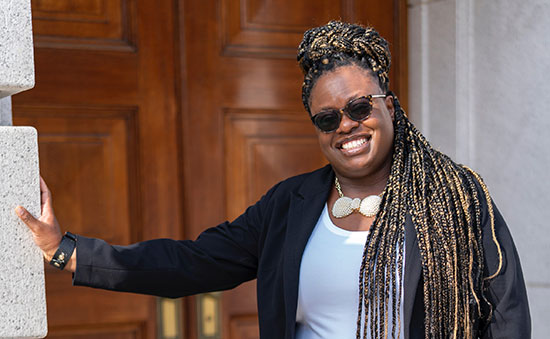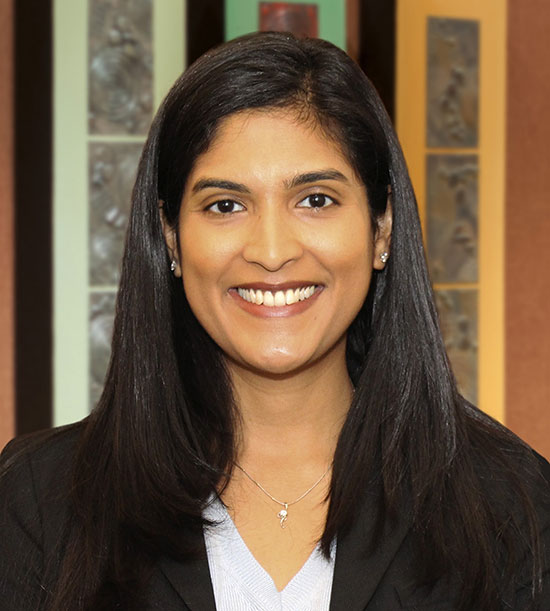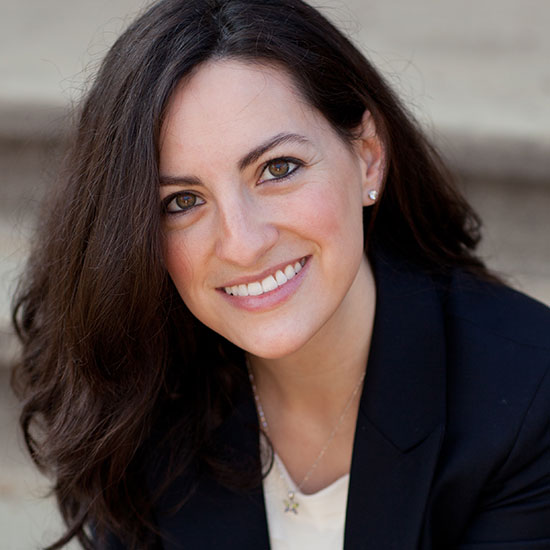
Most if not all legal employers would say they’re in favor of diversity and inclusion in the profession and in society at large. Yet those who track the progress of law firms and other legal entities say progress has been halting, especially as lawyers move up the ranks. How can legal employers best attract – and, more important, retain – the widest possible range of talent?
In 2016, the State Bar of Wisconsin established a standing Diversity and Inclusion Oversight Committee to support and encourage these efforts. The State Bar adopted a broad definition of diversity: “The term ‘diversity’ has a dynamic meaning that evolves as the demographics in the state change. It is an inclusive concept that encompasses, among other things, race, ethnicity, national origin, religion, gender, gender identity, age, sexual orientation and disability. Inclusion helps to create a culture that embraces people from the widest range of talent and experience and promotes understanding and respect for all people and different points of view in the legal profession.”
How well is the legal profession doing in attracting and retaining diverse lawyers? Truscenialyn Brooks, an associate at Perkins Coie LLP, Madison, and chair of the firm’s diversity committee, says the legal profession is probably closer to lip service than full commitment. “But we’re moving,” she says. “We’re somewhere in the middle, moving closer to commitment. There’s still a long way to go. Diversity and inclusion is still kind of new.”
Brooks adds that when she has spoken about the topic with her parents, both of whom worked at “extremely large companies,” they told her, “there never was a diversity and inclusion person at their jobs.”
“So it still has a long way to go, but I think we have made a lot of strides in the short amount of time it has been, quote-unquote, ‘a thing.’”

Truscenialyn Brooks, an associate at Perkins Coie LLP, Madison, and chair of the firm’s diversity committee, says firm leaders need to be focused on diversity and inclusion for both the short term and the long term, which she analogizes to being focused on the weather vis-à-vis the climate. “The climate is, what is our long-term plan? The weather is instant and today.”
Why Women Leave the Legal Profession Mid-career
As president of the American Bar Association in 2017-18, Hilarie Bass, who later left her position as co-president of Miami-based Greenberg Traurig to found the Bass Institute for Diversity & Inclusion, commissioned a research project to clarify why experienced women were leaving the legal profession mid-career. The results were disappointing but not surprising, and they likely shed light on why other diverse lawyers do not feel as though inclusion has gone far enough.
Bass notes that for more than three decades, women have comprised nearly 50 percent of all law students and incoming associates at law firms. But by age 50, only about 27 percent of women are still in the law profession, and less than 20 percent of equity partners are women, which means firms are losing a significant portion of their top talent.
Those conclusions “didn’t come as a big surprise to anybody,” Bass says. “Despite the challenges posed by having children, most women choose to continue to work but leave the practice of law because they find it inhospitable. Lots of explanations were provided, and none of them [were] particularly surprising.”
While overt discrimination has lessened during the past 30 years, the largely male senior ranks of law firms still need to overcome implicit bias, Bass says, adding that decisions about compensation and elevation in the ranks are not as objective as they should be. “It clearly is not the meritocracy we think it is,” she says of the profession. “The tough part about implicit bias is that most people don’t think they have it. They believe they’re being objective.”
Occasionally women face obvious bias, for example, statements such as “you don’t need the money, you’re the second income” in the family, or “ever since you’ve had kids, you’re not as committed to your work.” But because most people in senior leadership positions do not express such thoughts, some people have been “focused on the myth that the pipeline will take care of this problem,” Bass says. “But unless we intervene, it truly will take 200 years to achieve gender parity. That’s not acceptable to most women.”

Hilarie Bass, former ABA president and founder of the Bass Institute for Diversity & Inclusion, notes women have comprised nearly half of all law students and incoming associates at law firms for more than 30 years. But by age 50, only about 27 percent of women are still in the law profession, and less than 20 percent of equity partners are women, which means firms are losing a significant portion of their top talent. Photo: Image Me Photography
Tamp Down Implicit Bias to Retain Talent
Law firms are also beginning to recognize that, by leaving potentially 50 percent of their talent behind, they can’t be as competitive. “One of the reasons I started the institute is that I spoke to many people who said, ‘I know what we’ve been doing for the past 20 years isn’t working. We don’t know what else to do,’” Bass says. “We know many of the things that will work, out of academic research, or as a result of examples in corporate America.”
Partners are feeling pressure “not just from a moral perspective, but because general counsel are demanding diversity, and because managing partners are realizing that they can’t leave that much talent at the door,” she says. “Law firms spend hundreds of thousands of dollars in the training process. If people are leaving before you get the full benefit of their good work, there is an enormous cost. No one can afford to have good people leave because they don’t feel like they’re being included or have a real chance of success.”
With all this in mind, legal employers must ensure they’re tamping down implicit bias in areas such as compensation and elevation in the ranks, creating a level playing field. “People think they’re treating [diverse attorneys] on the merits, but these other biases are impacting their judgment,” Bass says. “Women are the poster child for that. During the evaluation process, a woman is told she’s too meek. That’s not going to generate confidence. The next year, she’s told ‘you’re too aggressive, so people aren’t comfortable with you.’”
For leaders to think women are capable, the women must be liked by their colleagues, she adds, while men “can prove their competency by proving they’re competent – even if people think they’re a pain in the a-- to deal with.”
You need to treat diversity like a high-end client – what do you do to show them your commitment?
– Truscenialyn Brooks
Parenthood is often a particularly noteworthy inflection point for the diverging assumptions about male and female lawyers, Bass says. “A man is perceived as more committed [to work] once he becomes a parent because he’s now a breadwinner and he has a family to support,” she says. “Women who have a child are immediately perceived as less committed to their job. There’s no reality to that. Some men are committed to being hands-on fathers; some women are very committed to not having parenthood interfere with their jobs. It’s not a fair basis for making assumptions.”
But those assumptions surface nonetheless and create double standards in how attempts at day-to-day work-life balance are perceived. “When a guy leaves at 4 o’clock to coach his son’s soccer team, everybody thinks, ‘What a great dad,’” Bass says. “Whereas when a woman leaves at 4 o’clock to take her sick kid to the pediatrician, everybody thinks, ‘I knew she wouldn’t be as committed.’ And women [leaders] have many of the same biases.”
Surmounting these sorts of implicit biases requires objective criteria, Bass says, which her institute helps legal and other employers to brainstorm and put into practice. For a law firm, such criteria should be laid out for each year of practice as an associate. With specific criteria in place, the yearly evaluation does not come down to, “You’ve had a good year, I’m going to give you a good raise,” she says. “The more objective they are, the more likely you are to tamp down these biases.”
But while everyone would like to be evaluated against an objective set of metrics, that’s not typically how it works, Bass says. That lack of objectivity might make a male partner think to himself, “I feel more comfortable with Tom. We go to basketball games together. Mary Smith is a nice lady, but I don’t really have a relationship with her.” She adds, “That’s often the case, although it’s not expressed that way.”
Women of color probably have an even more difficult time overall, given the intersection of biases against women and against people of color, Bass says. She is aware of one study that showed law firm leaders are less taken aback when African-American women come across as aggressive – but that’s only because “most men assume they’re aggressive.” Similarly, Bass has seen research to the effect that lesbians advance more dependably in the ranks than straight women, but that’s “because there’s an assumption that [the former are] more like the men,” she says.
“You can’t throw them all in the mix. There are very different categories [of diversity] that create different scenarios,” Bass says. “In a diverse workplace, we have to evaluate our own assumptions about people’s behavior. Are you presumed to have these negative characteristics even if you don’t? Presumed behavior is based on the stereotypes we have been socialized with. Within a law firm environment, we have to evaluate the person in front of us, not what we assume that person is going to behave like.”

Recruiting diverse lawyers requires a different approach, not making the same-old, same-old trips to the same law schools and looking at the same criteria, says Rekha Chiruvolu, director of diversity and inclusion at Nixon Peabody, Los Angeles. “We need to take a step back and think about what other factors are important in being a successful attorney. Repeating the same patterns will get you the same kinds of attorneys.”
Toward a More Inclusive Practice
While the overall numbers on diverse partners might seem stuck, Rekha Chiruvolu, director of diversity and inclusion at Nixon Peabody, Los Angeles, sees progress beneath the surface, at least in terms of the awareness and conversations being held at the senior level of legal employers about how to become more diverse and inclusive. Chiruvolu will share successful diversity and inclusion strategies at the State Bar of Wisconsin’s 2019 Annual Meeting & Conference in June.
These conversations are often focused on the overall diversity headcount, but Chiruvolu hopes they will shift toward the inclusion piece. “Inclusion is about the experience people have within the organization – that’s what it takes to move the needle,” she says. “The more people feel engaged, supported, and able to be their authentic selves. We’re having those conversations on a deeper level, more consistently, with the goal of having action items. We didn’t get here overnight, with these statistics; we won’t be able to snap our fingers” and solve the issue.
When firms aren’t able to retain diverse lawyers, that in turn makes recruiting more difficult, Chiruvolu says. “When they don’t see others like them at the top, they don’t see a path forward,” she says. “If they don’t see advancement, they leave to go elsewhere. It’s about making sure they have sponsors and advocates and champions who are looking out for their development. It’s about making sure their names are in conversations, that they’re in the pipeline for leadership roles.”
When Chiruvolu, who is a lawyer but does not currently practice, examines her firm’s pipeline, she’s not only looking one year out – she wants to know the picture in three, five, or 10 years. “There’s not a one-size-fits-all approach,” she says. “We need to be able to pivot based on individual talents and needs versus one broad stroke for everybody. Lawyers in particular face a challenge because so much of what we do is look to our past for answers. For an industry still focused on the past, it’s very uncomfortable to be looking into the future. It’s a very risk-averse profession, yet a lot of what we need to do to move the needle is take risks.”
Learn More About Improving Diversity
 Join Rekha Chiruvolu, director of diversity and inclusion at Nixon Peabody, Los Angeles, and learn the best practices for developing and implementing a successful diversity and inclusion strategy. She is a featured speaker for the State Bar of Wisconsin 2019 Annual Meeting & Conference in June. Diversity & Inclusion Oversight Committee members Hon. Carl Ashley, Milwaukee County Circuit Court, and Rebecca Scheller, U.W. Law School, will join the discussion.
Join Rekha Chiruvolu, director of diversity and inclusion at Nixon Peabody, Los Angeles, and learn the best practices for developing and implementing a successful diversity and inclusion strategy. She is a featured speaker for the State Bar of Wisconsin 2019 Annual Meeting & Conference in June. Diversity & Inclusion Oversight Committee members Hon. Carl Ashley, Milwaukee County Circuit Court, and Rebecca Scheller, U.W. Law School, will join the discussion.
What: “Improving Diversity and Inclusion in the #MeToo Era”
When: Thursday, June 13, 3 – 4:15 p.m.
Where: Hyatt Regency/KI Convention Center, Green Bay
Sponsor: Diversity & Inclusion Oversight Committee
To register: amc.wisbar.org
<iframe src="//www.youtube.com/embed/n3UIn7VX3TQ" width="525" height="295" frameborder="0" allowfullscreen></iframe>
Learn to Recruit Differently
Taking risks includes recruiting differently, not making the same-old, same-old trips to the same law schools and looking at the same criteria, Chiruvolu says. “We need to take a step back and think about what other factors are important in being a successful attorney,” she says. “If you have someone who didn’t go to a top-20 school but served in the military, worked two jobs in college, took time off to raise a family – you can’t teach that kind of drive. When you look at some of our most successful attorneys, it’s a lot of these intangibles that people use to describe them. … Repeating the same patterns will get you the same kinds of attorneys.”
Once you narrow your search, engage everyone in your firm in the interview process, Chiruvolu says. “Make sure your interviewers are diverse, to make sure you’re getting a broad range of perspective on all candidates,” she says. And then to help retain diverse attorneys, take an individualized approach and ensure everyone gets the same resources and opportunities. “Look at your most high-profile matters. Is it a diverse team? It’s human nature to gravitate toward the same type of person over and over again. It’s a little uncomfortable to get out of that pattern. But by doing that, you’re creating more deliberate opportunities.”
To accomplish these aims, legal employers need buy-in from senior leadership, who then deliver clear messaging in support of diversity and inclusion, Chiruvolu says. “Our managing partner, Andrew Glincher, is incredibly engaged; he’s the voice at the top of all our initiatives,” she says. “You also need to have a clear strategic plan about what goals you want to achieve, and update it each year based on successes and setbacks and stagnation. Make sure you’re looking at it from all angles and be willing to adapt. … You need to be willing to try something, and if it doesn’t work, tweak it if necessary – and then if need be, scrap it and try again.”
No one can afford to have good people leave because they don’t feel like they’re being included or have a real chance of success.
– Hilarie Bass
Firms that struggle with diversity and inclusion often have good intentions but do not make enough of a concerted effort, lacking either senior leadership buy-in or cross-sector teams that include recruiting, marketing, and business development, Chiruvolu says. “You’ll find there [are] a lot of allies in this. A lot of people do want to make strides. It means tapping into that energy,” she says. “People can see the goals in black-and-white, and see what you want to achieve. If you’re saying you want to be 50 percent women and minorities by 2020, that’s a lofty goal. It’s important to set realistic, achievable goals.”
Firms located outside major metropolitan areas – which, for Wisconsin, means virtually anywhere outside Milwaukee and Madison – have a steeper hill to climb, especially in attracting and retaining people of color, Chiruvolu says. She suggests tapping into not only Wisconsin law schools but some in the surrounding region, such as schools in the Chicago area, as well as nationally recognized law schools that might have attracted students of color from Wisconsin, for example, Howard University in Washington, D.C.
“It’s about casting a wider net,” she says. “I’m guessing that there [are] diverse folks from Wisconsin who are now at Howard Law. Maybe their families are still in Wisconsin, and they want to come back. The talent pool is out there. It may not be as large as in Los Angeles, San Francisco, or New York, but it is important to show them what opportunities there are in their home state. Look at it as a long game, and help build the pipeline.”

Rebecca Scheller, U.W. Law School assistant dean, says to attract diverse lawyers, “law firms need to not only sell the firm and its culture, but also the city in which the firm is located, and the opportunities outside the firm that exist for prospective new attorneys.” Photo: Nick Wilkes
Commit Resources to Moving Forward
Earlier in her career, Truscenialyn Brooks used to be surprised at firms that said they were committed to diversity but either had no idea how to go about becoming more diverse or put minimal funds or effort into doing so. Now, she’s more aware of those realities but hopes to help move the legal profession beyond such lip service. “People need to understand, it’s put your money where your mouth is,” she says. “If you want to know what a company values, look to the money.”
That means committing salary to the firm’s point person on diversity and inclusion for that intended purpose, committing other people to helping, and “buy-in from the very top to the very bottom,” Brooks says. “It’s about putting bodies behind it. We need people – not just a person – we need people who are committed to it. We have our own individual budgets. The privilege of working at a large firm is not lost on me. But a smaller firm with fewer attorneys, what can you do within your own structure, financial or whatever that may be, to show your commitment to moving forward? You need to treat diversity like a high-end client – what do you do to show them your commitment?”
But leaders at some firms don’t see diversity as a business generator, Brooks says. “It’s not necessarily something that people think of as bringing money in,” she says, but some “people are realizing that diversity is really important to the bottom line. A lot of clients are building diversity plans into their budgets. People are actually beginning to see that there is this connection between what you say is important, and what you put behind it.”
If you have someone who didn’t go to a top-20 school but served in the military, worked two jobs in college, took time off to raise a family – you can’t teach that kind of drive.
– Rekha Chiruvolu
Once firms do begin to move toward commitment, they sometimes make mistakes or have honest disagreements about the best way to proceed, which Brooks encourages them to hash out as best they can. “We need consensus on how we want to get there. What [are] our short-term and long-term goal[s]?” she says. “There are often missteps in terms of how much you actually pay your employees. People say diversity is important, and then when you look at what people are actually paid, often … diverse associates are paid less.”
To recruit and retain diverse associates, firms need to make them feel valued and to show a commitment to “fix the issues that have festered over generations,” Brooks says. “They need to go where diverse associates are, not follow the same rubric we’ve always followed.” That might mean creating opportunities such as a summer associate program focused on women, people of color, and members of the LGBTQ community, she says. “That may require us to step out on the edge,” she adds. “If my local law school doesn’t have a large selection of diverse candidates, I need to meet them where they are.”
They also need to present a diverse face among their leadership and partner ranks, Brooks says. “You’re recruiting me because I’m diverse, and then I look up the chain, and there’s no one who looks like me,” she says. “That either tells me you are committed to diversity, but it’s a process – and that’s fine, I understand everything is a process, but I want to understand, why have you not been able to achieve [diversity in leadership]? Or two, it tells me you are only focused on diversity at the lowest level, and that’s not a true dedication to diversity.”
Consider the ‘Whole’ Person
Retention can be challenging, especially outside major metropolitan areas, Brooks says, because lawyers of color need to feel welcomed both at the office and in the community. Brooks says that as a Wisconsin native, there are few places in the state where she would feel uncomfortable, but she can understand how someone from New York or Atlanta might not want to live in less metropolitan parts of the state.
 Ed Finkel is an Evanston-based freelance writer.
Ed Finkel is an Evanston-based freelance writer.
“I’m a whole person,” she says. “I need to leave work and find a place, as a black woman, where I can get my hair done. Sometimes, communities are not welcome to diverse associates. It’s not just what can we do within the four walls of our firm, but what can we do, generally, to attract people to come live here? Retention is such a broad, holistic thing. You have to think about, ‘If I’m going to bring such and such diverse candidate here, how are they going to feel living in this community?’”
That holistic approach seems vital to Rebecca Scheller, assistant dean of the U.W. Law School, who says diverse law students appear to go into government and corporate law at the same rates as other students. “For law firms to compete, we’ve learned that they need to not only sell the firm and its culture, but also the city in which the firm is located, and the opportunities outside the firm that exist for prospective new attorneys,” she says.
To show that broader community commitment, law firms need to consider which community organizations they support with their funds and time, Brooks says, while also partnering with other local industry leaders and business associations that can help foster change on a broader level. “What can we do to make our community represent what America looks like generally?” she says. “If I’m committed to diversity, I can only bring in so many people. If we get those industry leaders in our community [committed], we can get more buy-in.”
Bottom line, firm leaders need to be focused on diversity and inclusion for both the short term and the long term, which Brooks analogizes to being focused on the weather vis-à-vis the climate. “The climate is, what is our long-term plan?” she says. “The weather is instant and today. People worry about, what is diversity and inclusion today? We’re going to get diverse people and hire them today as associates. And that’s fine. But that’s the weather. The climate is also changing. You need to focus on both.”
